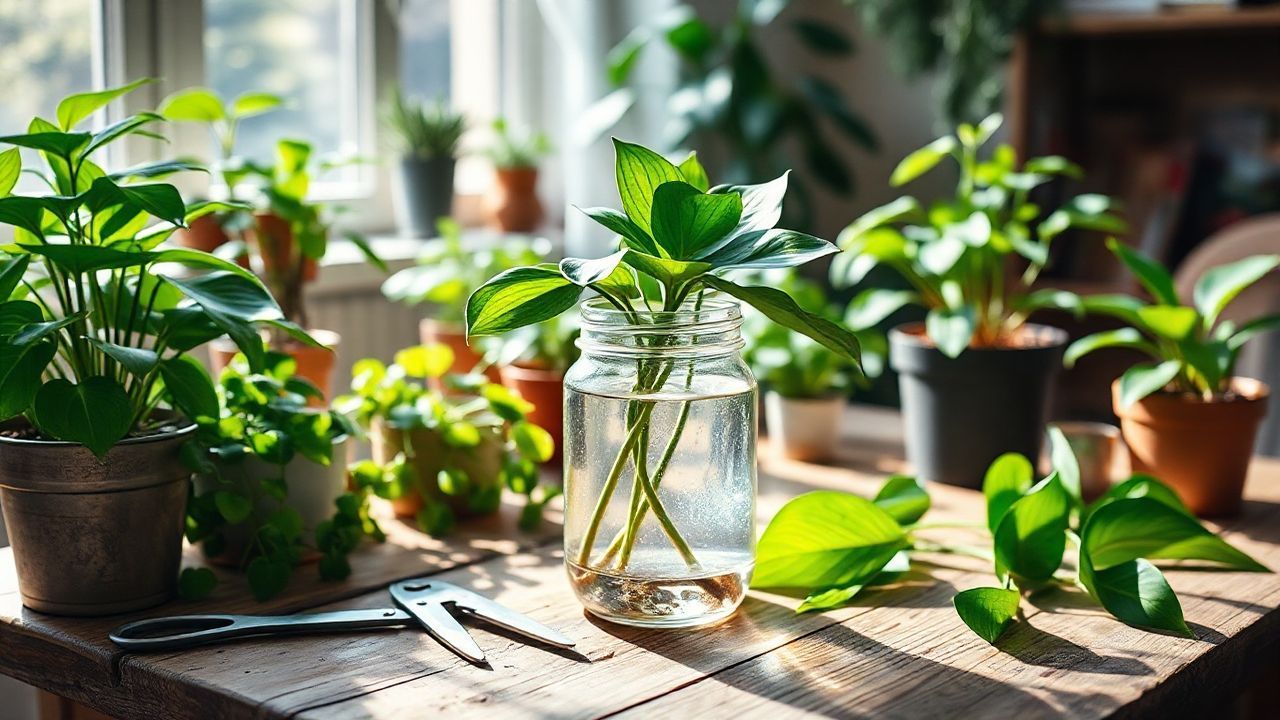Introduction to philodendrons
Why propagate philodendrons?
Firstly, propagating philodendrons allows you to create multiple plants from a single specimen, significantly increasing your collection without the added expense of purchasing new plants. This is particularly advantageous for rare or desirable varieties that may not be readily available or come with a hefty price tag.
Secondly, propagation enables you to experiment with different varieties and create unique combinations that reflect your personal style. Mixing and matching philodendrons with contrasting leaf shapes, colors, and textures can result in visually stunning arrangements that enhance the aesthetic appeal of any living space.
Furthermore, propagation plays a vital role in the rejuvenation of mature philodendrons. Over time, plants may become leggy or develop bare stems, compromising their overall appearance. By propagating new plants from healthy stem cuttings, you can effectively rejuvenate your philodendrons, creating a fuller and more visually appealing plant.
In addition to the practical benefits, propagation also has sentimental value. Sharing philodendrons with loved ones through propagation is a thoughtful and meaningful gesture that symbolizes the connection between people and plants. It allows you to create a tangible reminder of special moments or commemorate milestones in a unique and lasting way.
Overall, propagating philodendrons is a rewarding and versatile technique that offers numerous advantages, from expanding your collection to rejuvenating existing plants and sharing the joy of philodendrons with others. Whether you are a seasoned plant enthusiast or just starting your plant journey, incorporating propagation into your plant care routine will bring forth a wealth of benefits and enhance your overall experience with these beautiful and resilient plants.
Tools needed for propagation
To ensure successful propagation, having the right tools is crucial. Here’s a comprehensive list of essential items you’ll need:
Sharp knife or pruning shears: For precise stem cuttings. Clean and sterilize the blade to prevent infections.
Rooting hormone: Optional but recommended for stimulating root development. Use a powder or liquid formulation suitable for philodendrons.
Potting mix: A well-draining mix specifically designed for philodendrons is ideal. Look for options with a balance of peat moss, perlite, and vermiculite.
Pots or containers: Choose pots with drainage holes to prevent waterlogging. The size should be appropriate for the size of the cuttings.
Small stakes or bamboo sticks: To support long or weak cuttings while rooting.
Clear plastic wrap or bags: To create a humid environment, which aids in root development.
Heating mat: Optional but beneficial, especially during cooler temperatures. A heating mat provides warmth, encouraging faster root growth.
Grow light: If natural light is insufficient, grow lights can provide the necessary illumination for cuttings to thrive.
Thermometer and hygrometer: To monitor temperature and humidity levels, ensuring optimal conditions for root development.
Patience: Philodendron propagation can take several weeks to complete. Be patient and monitor the progress regularly.
Step-by-step propagation methods (water and soil)
Philodendrons, with their lush foliage and adaptability, are beloved houseplants that can easily be propagated to create new plants. While there are several methods for propagation, water and soil are the most common and effective techniques.
Water Propagation:
1. Prepare the Cutting: Select a healthy stem with several nodes (small bumps where roots emerge) and trim it just below a node. Remove any leaves that will be submerged in water.
2. Submerge in Water: Fill a clear glass or jar with room-temperature water and submerge the bottom inch or two of the cutting. Ensure that the nodes are completely submerged while the leaves remain above the waterline.
3. Provide Indirect Light: Place the cutting in a location that receives indirect sunlight for several hours a day. Avoid direct sunlight, which can scorch the leaves.
4. Change Water Regularly: Refresh the water every few days to prevent stagnation and bacterial growth.
5. Monitor Root Growth: Check the cutting every few days for root development. When the roots are approximately two inches long, the cutting is ready to be transplanted into soil.
Soil Propagation:
1. Prepare the Potting Mix: Use a well-draining potting mix specifically formulated for philodendrons.
2. Create a Drainage Hole: Ensure the pot has a drainage hole to prevent waterlogging, which can lead to root rot.
3. Fill the Pot with Soil: Fill the pot with the potting mix, leaving about an inch of space at the top.
4. Prepare the Cutting: Trim a healthy stem as described in the water propagation method. Dip the cut end in rooting hormone, a powder or gel that promotes root development.
5. Plant the Cutting: Insert the cutting into the potting mix, ensuring that the nodes are buried and the leaves remain above the soil’s surface.
6. Water and Provide Indirect Light: Water the cutting thoroughly and place it in a location with indirect sunlight.
7. Maintain Soil Moisture: Keep the soil consistently moist but not soggy to promote root growth.
Caring for propagated plants
Place your newly propagated Philodendron in bright, indirect light. Avoid exposing it to direct sunlight, as this can scorch its leaves. Water the plant thoroughly, allowing the top inch of soil to dry out before watering again. Overwatering can lead to root rot, so it’s important to maintain a balance.
Fertilize your Philodendron every two weeks during the growing season with a balanced liquid fertilizer. During the winter months, reduce fertilization to once a month. Keep an eye on the humidity levels, as Philodendrons prefer a humid environment. Misting the plant regularly or placing it on a pebble tray with water can help increase humidity.
With proper care, your propagated Philodendron will thrive and produce new leaves over time. Repotting may be necessary as the plant grows larger. Choose a pot that is slightly larger than the root ball and provides adequate drainage.
Remember to provide your Philodendron with a support structure, such as a trellis or stake, as it grows taller. With patience and proper care, your propagated Philodendron will continue to grow and bring beauty to your indoor space for years to come.

Leave a Reply